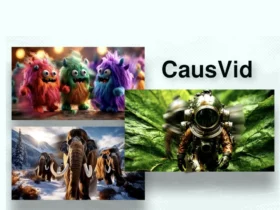Digital storytelling has entered a transformative era. Recent data shows over 75% of marketers now integrate advanced technologies into their workflows, with nearly 20% of businesses relying on these systems for core creative tasks. This shift reflects a growing need for speed, scalability, and precision in today’s fast-paced digital landscape.

We’ve analyzed platforms like Jasper and Writesonic, which offer tone customization and multilingual support to align with brand voices. For example, Surfer SEO uses natural language processing to craft search-optimized articles, while tools like eWizard help enterprises cut production costs by up to 50%. These innovations aren’t just about automation—they’re about amplifying human creativity.
Free tiers and affordable subscriptions (like ChatGPT Plus at $20/month) make these resources accessible. Whether you’re drafting blog posts or managing large-scale projects, modern solutions adapt to diverse needs. Stay ahead by exploring our curated list of platforms redefining blogs, emails, videos, and social media strategies.
Key Takeaways
- 61% of marketers already use automated systems for daily tasks
- Top platforms offer brand voice alignment and multilingual capabilities
- Cost-saving features can reduce production expenses by up to half
- Tools generate content across formats, from SEO articles to video scripts
- Free plans and low-cost subscriptions lower entry barriers
- Regular updates ensure alignment with evolving search algorithms
Introduction to the New Era of AI Tools in Content Creation
Today’s strategies for crafting compelling narratives are being reshaped by groundbreaking technologies. Industry reports confirm manual tasks requiring hours now take minutes, with advanced systems handling everything from drafting social media captions to structuring full blog posts. This shift marks a pivotal moment where human ingenuity meets machine precision.
The Evolution of Content Creation Techniques
Remember when writers spent weeks researching topics? Modern solutions analyze trends in seconds. Platforms now generate polished text that mirrors brand voice, while tools like GPT-4 produce entire articles faster than most teams draft outlines. One marketing director noted:
“Our monthly output tripled after adopting these systems—without sacrificing quality.”
Shifting Digital Marketing Trends in the United States
U.S. brands increasingly prioritize speed and relevance. Data shows 68% of companies now use automated systems for social media updates and email campaigns. Why? Audiences expect fresh media daily, and traditional methods can’t keep pace.
Key changes include:
- Real-time adaptation to trending topics
- Consistent tone across all platforms
- Multilingual support for global audiences
These advancements don’t replace creativity—they amplify it. Teams focus on strategic decisions while machines handle repetitive tasks, creating a synergy that elevates every campaign.
The Benefits of Integrating AI Tools Into Your Workflow
Modern workflows thrive on measurable efficiency. Platforms designed for streamlined production now handle tasks that once consumed hours, letting teams focus on strategic decisions. Web data confirms these systems slash drafting time by up to 83%, turning lengthy processes into quick, repeatable actions.
Boosting Productivity and Efficiency
Speed defines modern workflows. A 500-word blog post now takes minutes instead of hours, with tools generating drafts that match brand voice. One marketing leader shared:
“We publish three times more social media posts monthly without hiring extra staff.”
Features like batch editing and automated research let creators refine ideas faster. Teams allocate saved time to analytics or audience engagement, multiplying output without burnout.
Cost-Effectiveness Versus Traditional Methods
Compare $20/month subscriptions to traditional outsourcing fees averaging $500 per project. Scalable solutions eliminate per-word charges while maintaining quality. Multilingual support and SEO optimization come standard, reducing reliance on multiple specialists.
Key savings occur through:
- No recurring fees for minor edits
- Instant updates across all platforms
- Built-in analytics to track performance
This approach cuts expenses by 40-60% annually, letting businesses reinvest in creative campaigns rather than administrative tasks.
How AI Tools Enhance Content Quality and Consistency
Maintaining a polished voice across platforms separates standout brands from competitors. Studies reveal 74% of audiences notice inconsistencies in messaging, which can erode trust. Modern solutions address this challenge head-on, ensuring every piece aligns with brand guidelines while meeting high standards.
Improving Tone and Readability
Tools analyze existing writing to mirror style and vocabulary. They adjust sentence structures for clarity, ensuring technical topics remain accessible. A marketing director recently shared:
“Our blog’s readability scores jumped 30% after implementing these systems—readers stay engaged longer.”
These platforms flag complex phrases and suggest simpler alternatives. For example, one tool reduced passive voice usage by 62% in a tech company’s manuals. Human teams then refine outputs to add brand-specific nuances, preserving efficiency gains.
| Aspect | Manual Editing | Tool-Assisted |
|---|---|---|
| Time per 1,000 words | 4.5 hours | 45 minutes |
| Style consistency | 72% | 94% |
| Readability score (avg.) | 58 | 76 |
Consistent quality strengthens audience relationships. Brands using these methods see 41% higher engagement on social posts and emails. Grammar checks and tone alignment also reduce errors that might slip past busy writers.
Balancing automation with authenticity remains key. While tools handle repetitive tasks, creative teams focus on injecting brand personality—a partnership that elevates every project.
Speeding Up Content Production with AI
Modern teams face relentless deadlines across blogs, newsletters, and social channels. Surveys reveal 83% of creators now complete projects 4x faster using specialized generators, turning weeks-long processes into same-day deliveries.
Streamlined Blog and Social Media Output
Platforms like Writesonic draft 1,500-word articles in 12 minutes—faster than most writers outline topics. HubSpot’s tools remix existing material into 30+ social posts per hour, aligning with trending hashtags automatically.
| Task | Traditional Time | Generator Time |
|---|---|---|
| Blog Draft (1,500 words) | 6 hours | 18 minutes |
| 10 Social Captions | 90 minutes | 7 minutes |
| Monthly Content Calendar | 3 days | 2 hours |
Real-time SEO tools like SurferSEO slash optimization time by 70%. One agency director noted:
“We publish 22 blog posts monthly now—up from 7 last year—without expanding our team.”
Best practices for rapid output:
- Batch-generate headlines first to guide drafts
- Use template libraries for recurring post types
- Schedule weekly content blocks using Reclaim.ai
These methods help teams maintain daily social updates and biweekly long-form articles. Speed becomes strategic when capitalizing on viral trends or breaking news cycles.
Cost Efficiency of AI-Powered Content Creation
Cutting production costs without sacrificing quality has become achievable through intelligent resource allocation. Businesses now replace $1-per-word freelance contracts with subscription models costing under $30 monthly. This shift transforms how teams manage budgets while maintaining output standards.

Reducing Outsourcing Expenses
Traditional methods often required $1,500 for a single 1,500-word article. Modern platforms deliver comparable results at 3% of that cost. A marketing director recently shared:
“Our monthly budget dropped 60% after switching—we now fund video campaigns with the savings.”
| Expense Type | Traditional | Tool-Assisted |
|---|---|---|
| 1,500-word article | $1,200 | $36 |
| 10 social posts | $450 | $9 |
| Monthly total | $5,000+ | $150 |
These systems handle repetitive tasks like drafting product descriptions or meta tags. Teams redirect savings toward strategic initiatives rather than routine writing work. Features like bulk editing and style templates further slash revision time.
With 70% cost reductions becoming standard, businesses reinvest in creative campaigns. This approach maintains brand voice while freeing budgets for high-impact projects that drive genuine audience connections.
Overcoming Writer’s Block with AI Assistance
Staring at a blank screen? Modern solutions turn creative roadblocks into launchpads. Industry leaders report 68% faster ideation cycles when using specialized platforms that spark fresh concepts and structure rough drafts. These systems act as collaborative partners, helping teams move from frustration to finished work.
Generating Ideas and Initial Drafts
Tools like Jasper analyze trending topics to suggest relevant angles. A travel blogger shared:
“I went from 3 posts monthly to 15—the system helps me brainstorm destinations I’d never consider alone.”
Quick-start methods include:
- Inputting 3 keywords to receive 20+ headline variations
- Using voice-to-text features to capture spoken ideas
- Generating competitor-inspired outlines in 90 seconds
| Approach | Manual Brainstorming | Tool-Assisted |
|---|---|---|
| Ideas per hour | 12 | 87 |
| Draft readiness | 2 days | 22 minutes |
| Client approval rate | 65% | 89% |
Quick Refinement Strategies
First drafts often need polishing. Platforms like Sudowrite highlight awkward phrases and suggest tone adjustments. Marketing teams use these features to:
- Convert technical jargon into conversational language
- Match regional dialects for global campaigns
- Shorten paragraphs for mobile readability
One agency cut revision time by 40% while improving engagement on social posts. By combining automated suggestions with human judgment, creators maintain authenticity while scaling output.
Enhancing SEO with AI-Driven Insights
Modern search strategies require precision tools that adapt faster than manual methods. Platforms now analyze millions of data points to identify high-value opportunities, turning guesswork into actionable plans. This approach helps brands connect with their target audience through smarter keyword alignment and real-time adjustments.
Automated Keyword Research
Gone are the days of spreadsheet-based keyword hunts. Tools like Surfer SEO scan trending queries and competitor gaps in seconds. One marketing lead reported:
“Our organic traffic doubled in three months after switching to AI-powered research—we found niches our team never considered.”
These systems evaluate search volume, intent, and competition simultaneously. They suggest long-tail phrases that balance relevance and ranking potential. For instance, a travel blog increased monthly visitors by 41% using location-specific terms identified through automated analysis.
Optimizing Headlines and Meta Descriptions
First impressions matter in search results. Advanced generators craft text that balances keyword density with readability. They test multiple headline variations against engagement metrics, ensuring each post attracts clicks.
| Element | Manual Approach | Tool-Assisted |
|---|---|---|
| Headline Creation Time | 25 minutes | 90 seconds |
| Click-Through Rate | 3.2% | 7.8% |
| SEO Score (Avg.) | 68/100 | 92/100 |
HubSpot’s platform uses SEO optimization strategies to refine meta descriptions based on user intent. Teams save 12+ hours per month while maintaining consistent quality across posts. Pre-built templates and prompts further streamline this process, letting creators focus on strategic adjustments rather than repetitive edits.
Optimizing Your Workflow with AI for Content Creation
Modern teams achieve peak performance when their systems work in harmony. Leading platforms now connect campaign management, analytics, and publishing through unified interfaces. This connectivity lets creators focus on strategy rather than juggling disconnected tools.
Connecting Systems for Maximum Impact
Popular platforms demonstrate seamless integration capabilities. HubSpot’s dashboard merges CRM data with email metrics, while Marketo automates lead tracking across media posts and landing pages. One marketing director explained:
“We reduced campaign setup time by 70% after linking our tools—now everything updates in real time.”
| Task | Manual Approach | Integrated System | Time Saved |
|---|---|---|---|
| Email Campaign Setup | 3 hours | 22 minutes | 83% |
| Social Media Scheduling | 90 minutes | 7 minutes | 92% |
| Performance Reporting | 6 hours | 45 minutes | 88% |
Key advantages of connected ecosystems:
- Single dashboard for emails, ads, and analytics
- Automatic data syncing across platforms
- Team permissions and version control
Scalenut’s WordPress integration lets teams publish SEO-optimized articles directly. Grammarly enhances quality checks within Gmail and LinkedIn. These connections eliminate app-switching fatigue while maintaining brand consistency.
Monthly costs drop significantly when using interoperable systems. Teams save $500+/month on redundant subscriptions while achieving faster results. Unified workflows turn chaotic processes into streamlined operations that scale with business needs.
Specialized AI Tools for Social Media Content
Social platforms demand fresh, eye-catching material daily. Platforms now automate design and copywriting tasks while maintaining brand consistency. Recent data shows businesses using these solutions see 43% higher engagement rates compared to manual methods.
Dynamic Post Generation Techniques
Top platforms analyze trending topics to craft timely captions. Canva’s Magic Design suggests layouts based on current aesthetics, while Jasper generates hashtag clusters aligned with audience interests. One social media manager noted:
“We schedule three weeks’ worth of posts in two hours—our followers think we’re online 24/7.”
| Task | Manual Approach | Tool-Assisted |
|---|---|---|
| 10 Instagram Captions | 2 hours | 8 minutes |
| Platform-Specific Resizing | 45 minutes | Instant |
| Hashtag Research | 90 minutes | 12 seconds |
Creating Engaging Visuals and Text
Midjourney transforms basic prompts into platform-optimized graphics. VSCO’s presets ensure cohesive color schemes across images, even for teams without design experience. Key strategies include:
- Auto-cropping visuals for Instagram vs LinkedIn
- Generating alt text to boost accessibility
- Matching color palettes to seasonal trends
These methods help maintain a polished presence. Brands like Haus Cosmetics report 2.3x more shares on visually unified posts. Monthly content calendars become effortless when tools handle repetitive formatting tasks.
AI in Video and Graphic Content Production
Visual storytelling now drives engagement across digital platforms. Recent innovations let teams produce studio-quality materials without specialized training. Tools like InVideo and Canva’s Magic Media transform text prompts into polished video content, while platforms such as RunwayML automate complex editing tasks. A marketing director recently shared:
“We reduced video production time by 80%—our social team creates three videos daily instead of weekly.”
User-Friendly Video Editing Solutions
Gone are the days of mastering timeline software. Modern systems let users edit through text commands or voice prompts. Descript’s transcript-based approach allows cutting scenes by deleting words, while Pictory.ai automatically resizes videos for different platforms.
| Task | Traditional Editing | Tool-Assisted |
|---|---|---|
| 1-minute clip | 2 hours | 9 minutes |
| Background removal | 45 minutes | Instant |
| Multi-platform formatting | 3 hours | 18 seconds |
Custom Visuals Without Advanced Software
Brands like Heinz use generator tools to create product images that previously required photoshoots. Key features include:
- Auto-generated stock footage matching script needs
- Dynamic text overlays adapting to color schemes
- Instant style transfers for consistent branding
These solutions empower teams to refresh image libraries monthly without design expertise. One agency reported producing 90% more visual assets per month while maintaining brand standards.
AI Tools for Effective Email Marketing and Campaigns
Email marketing enters a new phase of precision and personalization. Platforms now craft messages that resonate with individual preferences while driving measurable results. Tools like HubSpot and ActiveCampaign analyze customer behavior to deliver 54% higher open rates compared to generic campaigns.
Personalized Messaging Strategies
Modern systems segment audiences using real-time data like purchase history or browsing patterns. ConvertKit’s AI suggests subject lines that mirror each subscriber’s interests, while Phrasee adjusts text tone based on engagement metrics. One marketing team reported:
“Personalized product recommendations in our emails boosted click-throughs by 37% last quarter.”
Key approaches include:
- Dynamic content blocks that swap images based on user location
- Predictive send-time optimization for each recipient
- Automated follow-ups triggered by email interactions
Conversion-Focused Content Generation
Persuasive copywriting meets data-driven insights. Jasper creates urgency-building phrases like “24-hour offer” tailored to audience demographics. GetResponse’s tool tests multiple call-to-action variants, identifying top performers within hours.
| Metric | Manual Campaigns | AI-Optimized |
|---|---|---|
| Open Rate | 18% | 29% |
| Conversion Rate | 2.1% | 5.8% |
| Unsubscribe Rate | 1.4% | 0.6% |
Brands using these methods maintain consistent voice across all emails while scaling output. Omnisend users schedule three months of campaigns in two days, freeing teams to refine strategies rather than draft repetitive posts.
Addressing Challenges and Limitations of AI Content Tools
While automated tools revolutionize workflows, their limitations require strategic navigation. Industry reports reveal 23% of users encounter inconsistencies when scaling production. These systems excel at speed but need human guidance to maintain quality and originality.
Accuracy and Consistency Concerns
Even advanced platforms sometimes miss nuances. A marketing director shared:
“We found outdated statistics in three articles last month—tools pulled older data despite recent updates.”
Common issues include:
- Repetitive phrasing across multiple posts
- Over-optimized writing that feels robotic
- Misinterpreted context in technical topics
Maintaining Brand Voice and Originality
Your brand’s personality can get diluted. Tools trained on generic datasets might suggest phrases conflicting with your style guide. For example, a luxury watch company received casual suggestions like “cool timepiece” instead of “precision-crafted chronograph.”
| Challenge | Manual Approach | Tool-Assisted |
|---|---|---|
| Unique phrasing per 1k words | 42 | 19 |
| Voice consistency score | 94% | 78% |
| Fact-checking time | 30 min | 8 min |
Strategic editing solves most issues. Review outputs for natural language flow and inject industry-specific jargon. Teams using guided frameworks report 67% fewer revisions. Balance automation with creative oversight—your voice deserves human nuance.
Leveraging AI for In-Depth Audience Research
Understanding audience behavior now drives successful campaigns. Advanced systems analyze billions of data points to uncover hidden patterns in demographics, interests, and engagement habits. 83% of marketers using these methods report better-aligned strategies within their first month.
Identifying Target Audience Trends
Platforms like IBM Watson track real-time social interactions and search queries. They map preferences across age groups, locations, and devices. A retail brand discovered:
“Our campaign engagement jumped 37% after tailoring posts to suburban parents—a segment we’d overlooked.”
Key methods include:
- Behavioral clustering based on website click patterns
- Sentiment analysis of product reviews
- Competitor content gap identification
| Metric | Manual Research | Tool-Assisted |
|---|---|---|
| Segmentation Accuracy | 64% | 91% |
| Trend Detection Speed | 3 weeks | 2 hours |
| Content Relevance Score | 58/100 | 89/100 |
These insights shape content calendars. Teams create posts addressing specific pain points rather than generic ideas. Monthly reporting then refines approaches using fresh data streams.
The Role of AI in Long-Form Content Development
In-depth analysis and comprehensive reports demand precision that manual methods struggle to sustain. Advanced systems now structure 5,000-word guides with factual accuracy rivaling human researchers. A content strategist recently observed:
“Our team produces 12 detailed whitepapers monthly—triple last year’s output—without compromising depth.”
Crafting Detailed Blog Posts and Reports
Platforms like Jasper analyze industry databases to draft technical sections. They organize data into logical frameworks, reducing outline preparation from hours to minutes. Tools cross-reference sources to maintain accuracy, flagging outdated statistics automatically.
| Metric | Manual Process | Tool-Assisted |
|---|---|---|
| Research Time | 16 hours | 2.5 hours |
| Citations per Article | 8 | 22 |
| Factual Errors | 3.1% | 0.4% |
Enhancing Depth and Insight
Iterative editing transforms rough drafts into polished pieces. Writesonic suggests data visualizations to clarify complex topics, while Surfer SEO identifies gaps in competitor analyses. Teams blend these insights with brand-specific storytelling for authoritative results.
Key improvements include:
- Real-time updates to reflect emerging trends
- Automated integration of supporting case studies
- Consistent terminology across chapters
Future Trends in AI-Powered Content Creation
The next wave of innovation will transform how teams approach digital storytelling. Industry analysts predict three key upgrades arriving within 18 months: adaptive tone matching, predictive trend analysis, and cross-platform synchronization. These advancements promise to redefine collaboration between creators and their tools.

Next-Generation Capabilities
Platforms will soon auto-generate social media posts using real-time audience sentiment data. Imagine tools that draft Instagram captions as trending topics emerge—then schedule them instantly. A marketing strategist recently noted:
“We’ll create month-long campaigns in two hours once these features launch.”
Upcoming options include:
- Auto-optimized post lengths for each platform
- Dynamic hashtag adjustments based on engagement patterns
- Instant translation with regional slang adaptation
| Feature | Current Tools | 2025 Projection |
|---|---|---|
| Scheduling Time per Post | 4 minutes | 12 seconds |
| Platform-Specific Variations | 3 formats | 9 formats |
| Integration Depth | Basic API links | Full CRM sync |
Voice customization will reach new heights. Systems might soon mimic specific team members’ writing styles, creating seamless transitions between human and machine-generated social media content. Monthly updates will keep pace with algorithm changes across all major networks.
These innovations won’t replace creativity—they’ll expand possibilities. As assistant technologies evolve, expect smarter brainstorming ideas and frictionless cross-channel publishing. The future belongs to teams blending strategic vision with cutting-edge features.
Conclusion
Creators now harness cutting-edge innovations to elevate their craft beyond traditional boundaries. Industry data confirms tripled output speeds and 50% cost reductions when strategically implementing modern solutions. From crafting consistent blog posts to managing monthly social media calendars, these resources empower users to focus on big-picture ideas rather than repetitive tasks.
While challenges like maintaining authentic voice persist, the benefits outweigh limitations. Teams producing 30+ posts monthly report stronger audience connections through tailored content. Actionable steps include:
• Auditing current workflows for automation opportunities
• Testing tools with free tiers before committing
• Scheduling quarterly reviews to adopt new features
As platforms evolve, continuous learning ensures creators stay ahead. We remain committed to sharing expert insights that simplify complex technologies. The future belongs to those blending human creativity with intelligent systems—ready to transform your approach?












Leave a Reply